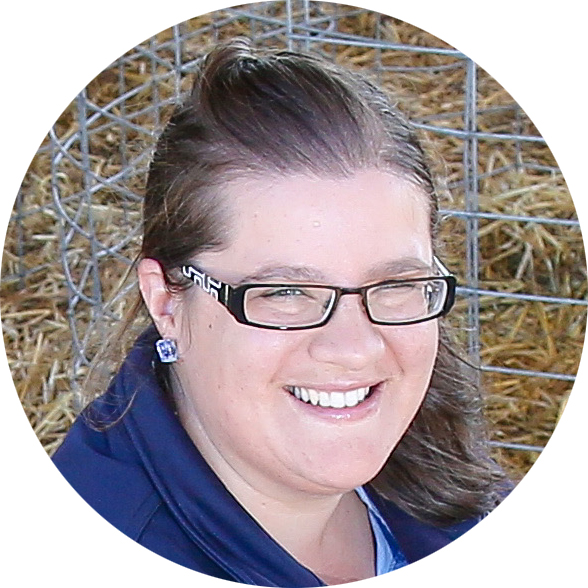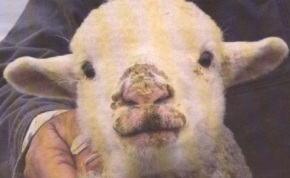Vaccines for lambs: scabby mouth
13 Jul 2021
 PRODUCTION ADVICE - JULY 2021 - ANIMAL WELFARE
PRODUCTION ADVICE - JULY 2021 - ANIMAL WELFARE
By Linda Searle
District Veterinarian
P: 03 5881 9919 | M: 0427 629 740 | E: linda.searle@lls.nsw.gov.au
With all the vaccines on the market, how do you know which you should be using on your farm? Depending on the nature of your sheep operation, you probably have different risks and different vaccination needs.
Clostridial vaccines such as 5-in-1 (or 6-in-1, which also protects against cheesy gland) are usually a standard inclusion in the lamb-marking process. They are widely used as they provide protection against diseases such as pulpy kidney, which can cause the death of rapidly growing lambs on rich feed.
Gudair vaccination may also be given at lamb marking, particularly in areas where ovine Johnes disease is widespread. Gudair-vaccinated lambs should be tagged with a V-tag to help recognise them as ‘approved vaccinates’, and small premiums can sometimes be paid where restockers are seeking OJD-vaccinated sheep.
The other vaccine available for lambs is for scabby mouth (see photo, right, courtesy NSW DPI).
Scabby mouth, sometimes known as orf or contagious pustular dermatitis, is a  highly contagious viral disease of sheep and goats. It commonly affects lambs and kids less than a year old. The virus enters through breaks in the skin and results in painful scabs and pustules. In sheep grazing rough country, such as thistles or burrs, these lesions are usually around the mouth, hence the name scabby mouth. Wet conditions can lead to skin damage around the feet, creating an entry point for the virus and resulting in foot lesions and lameness. The udder may also be affected, which can lead to mastitis and affected ewes refusing to let their lambs drink.
highly contagious viral disease of sheep and goats. It commonly affects lambs and kids less than a year old. The virus enters through breaks in the skin and results in painful scabs and pustules. In sheep grazing rough country, such as thistles or burrs, these lesions are usually around the mouth, hence the name scabby mouth. Wet conditions can lead to skin damage around the feet, creating an entry point for the virus and resulting in foot lesions and lameness. The udder may also be affected, which can lead to mastitis and affected ewes refusing to let their lambs drink.
While scabby mouth is rarely fatal, it can cause considerable production losses due to reduced feed intake. This causes delays in finishing and sale of affected mobs of lambs.
Infected animals usually recover on their own over four to six weeks. The lesions tend to ease after around three weeks, and normal feeding and movement resumes. Previously infected animals usually do not get severe disease again, although sometimes they may experience brief, mild reinfection.
The virus survives in the scabs from infected animals and can go on to contaminate the environment for a long time (potentially years). Carrier sheep can also be a source of the virus. This means that once an outbreak has occurred on farm, the virus tends to stick around, so you may be more likely to consider vaccination in future. Severe disease outbreaks don’t necessarily occur every year, but they are more common in conditions where skin abrasion is occurring and providing a window of access for the virus.
Scabby mouth is also zoonotic, which means that it can infect humans. This typically occurs via damaged skin on the hands leading to a single lesion on a finger which usually heals in six or seven weeks. You should speak to a health care professional if you suspect you may have orf.
The scabby mouth vaccine is a live virus vaccine. It is administered to the lamb as a scratch on the inner thigh. A mild infection then develops at the site of the scratch five to 10 days after vaccination, triggering immunity after around two weeks. It is a good idea to check a few lambs about a week after vaccination to ensure that pustules are present at the scratch site, indicating that the vaccine is taking effect. A single dose of vaccine is usually enough, as this provides good primary immunity. Natural environmental exposure over time usually maintains immunity.
As previously mentioned, the vaccine contains a live virus, so vaccination can introduce the virus onto properties if it was not already present. It also means that you should take care while vaccinating to protect yourself from the virus. The virus is easily inactivated by disinfectant, so frequent washing of hands and wearing gloves can help protect you. It is also important that you don’t use disinfectant on the scratch applicator or near the scratch site on the animal as this can inactivate the vaccine and stop it working. As with all vaccines, it is important to read the label to get the important information around dosage, handling and safety.
There are many factors that may influence your vaccine choices at lamb-marking. Risk of disease, where the lambs are going, timing, number of procedures around the cradle, and cost-benefit factors should all be considered. Scabby mouth vaccine may not be necessary for all operations, but it is worthwhile considering, and you should seek advice before adopting it as an inclusion in your vaccination program. For further information on scabby mouth or vaccinating lambs, contact your nearest LLS District Vet.